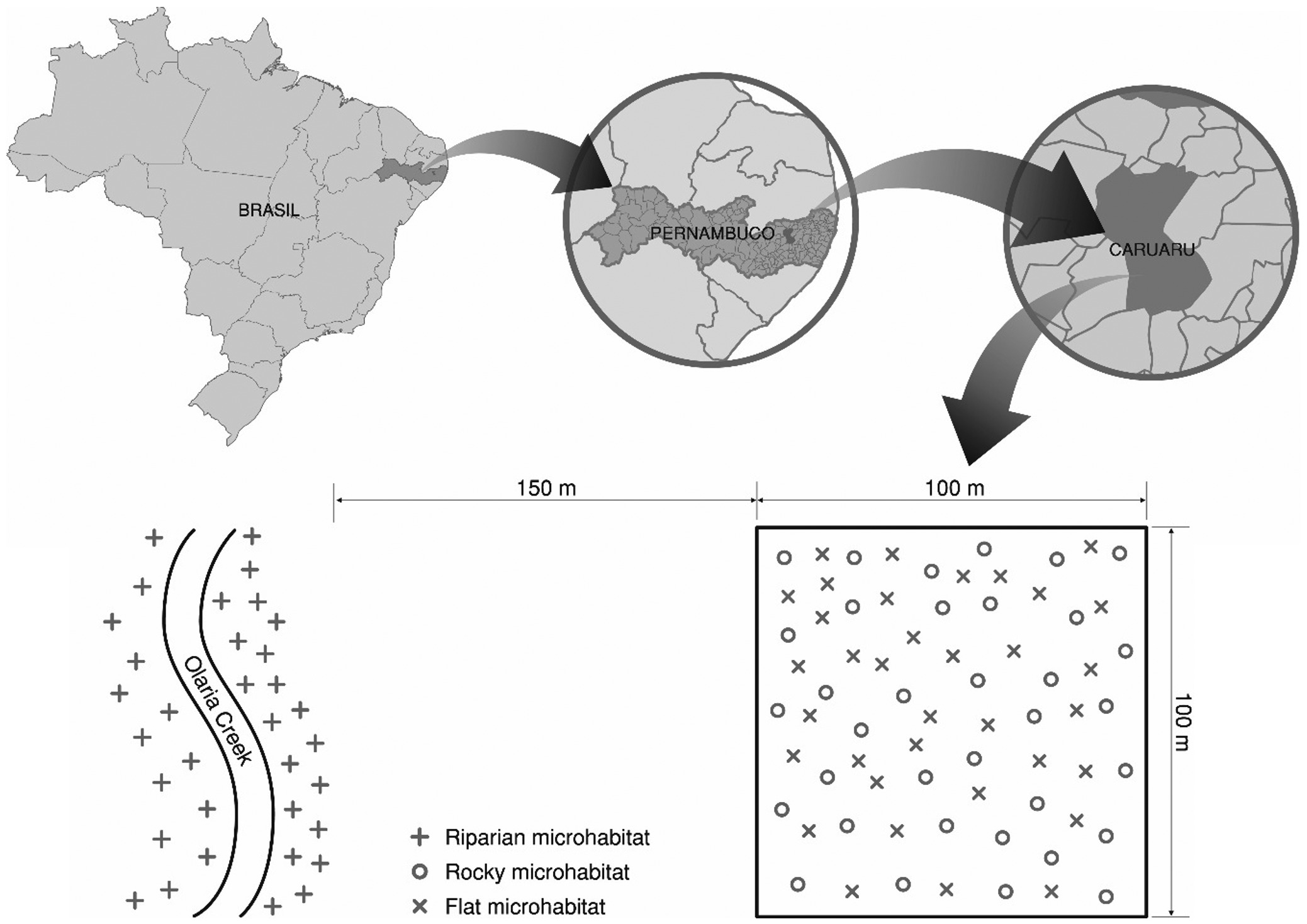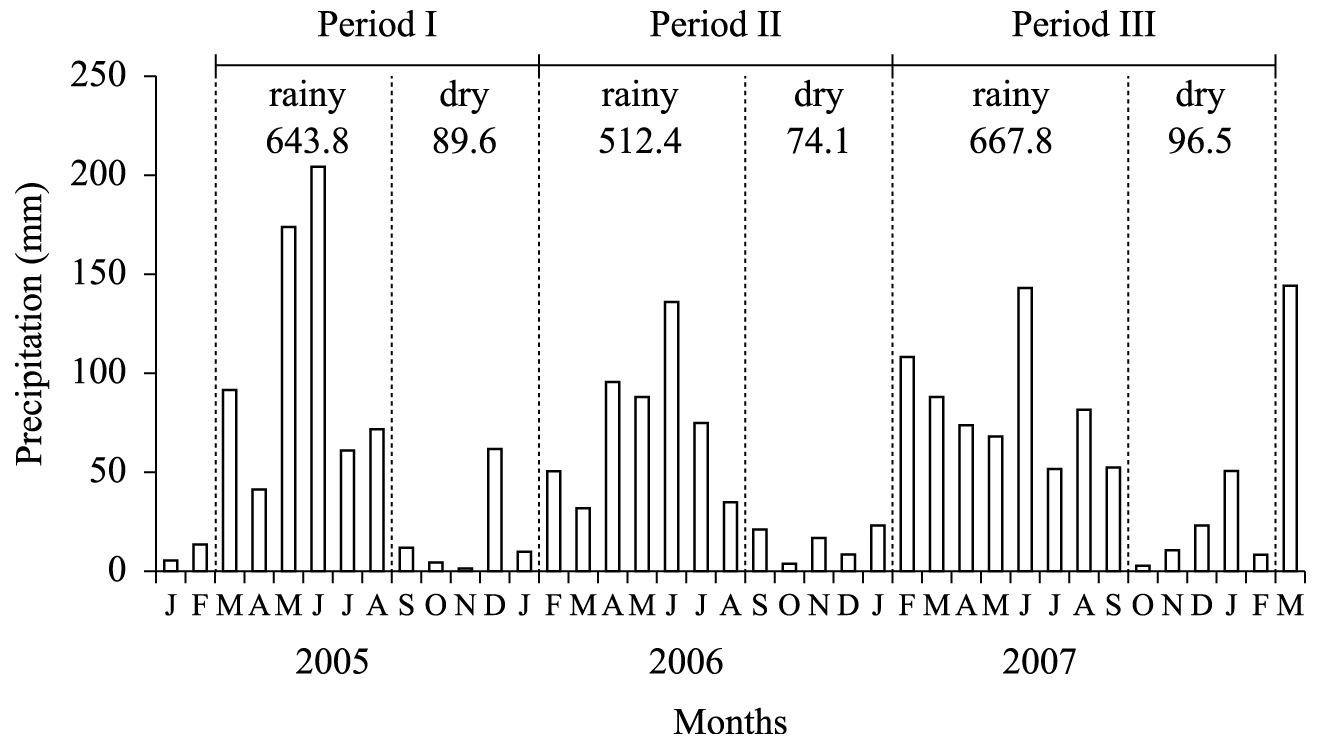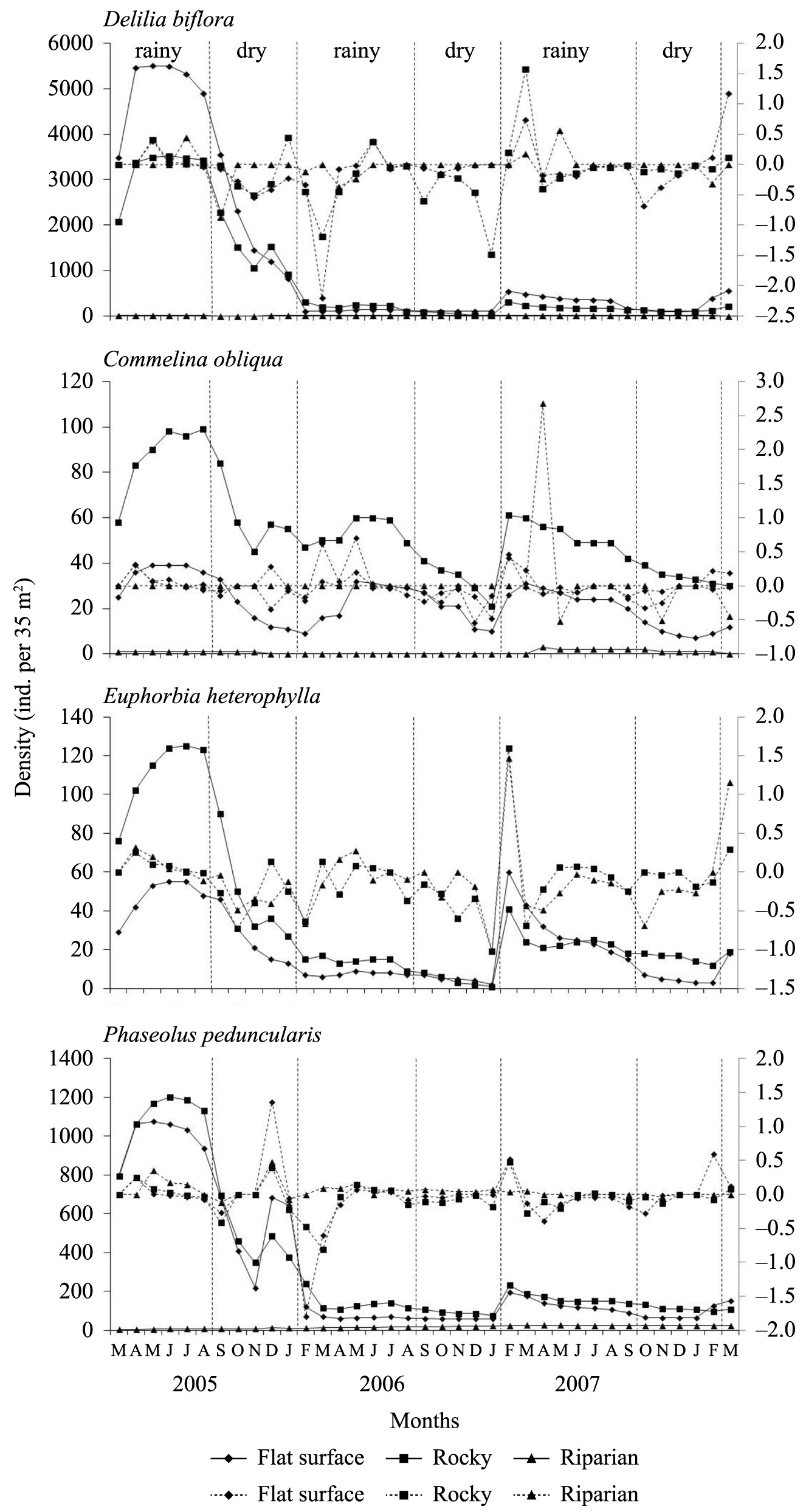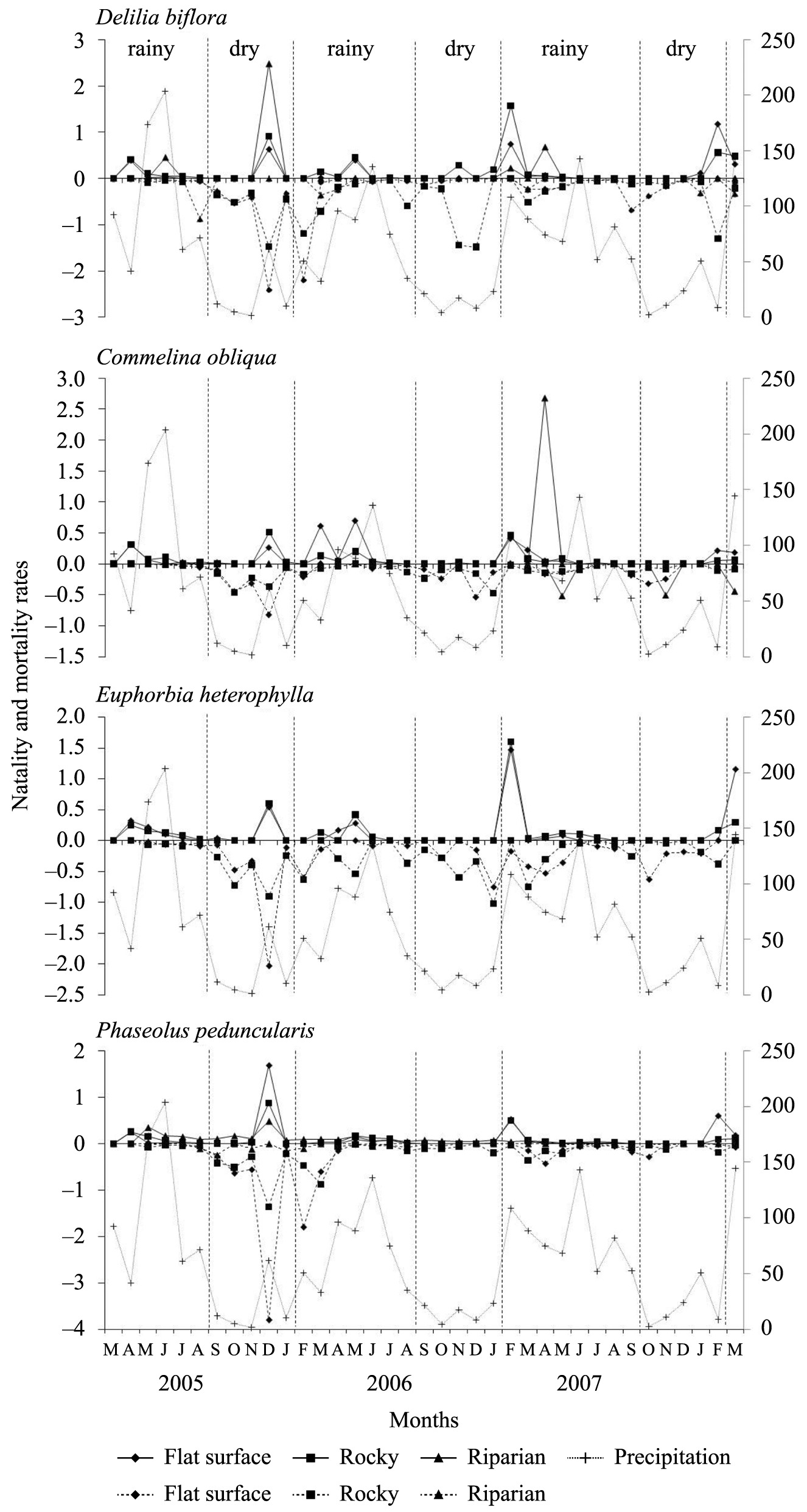Abstract
Variation in annual rainfall is considered the most important factor influencing population dynamics in dry environments. However, different factors may control population dynamics in different microhabitats. This study recognizes that microhabitat variation may attenuate the influence of climatic seasonality on the population dynamics of herbaceous species in dry forest (Caatinga) areas of Brazil. We evaluated the influence of three microhabitats (flat, rocky and riparian) on the population dynamics of four herbaceous species (Delilia biflora, Commelina obliqua, Phaseolus peduncularis and Euphorbia heterophylla) in a Caatinga (dry forest) fragment at the Experimental Station of the Agronomic Research Institute of Pernambuco in Brazil, over a period of three years. D. biflora, C. obliqua and P. peduncularis were found in all microhabitats, but they were present at low densities in the riparian microhabitat. There was no record of E. heterophylla in the riparian microhabitat. Population size, mortality rates and natality rates varied over time in each microhabitat. This study indicates that different establishment conditions influenced the population size and occurrence of the four species, and it confirms that microhabitat can attenuate the effect of drought stress on mortality during the dry season, but the strength of this attenuator role may vary with time and species.
Keywords:
demography; density; herb; mortality; natality; spatial variation

 Thumbnail
Thumbnail
 Thumbnail
Thumbnail
 Thumbnail
Thumbnail
 Thumbnail
Thumbnail



